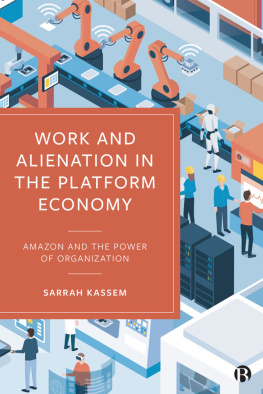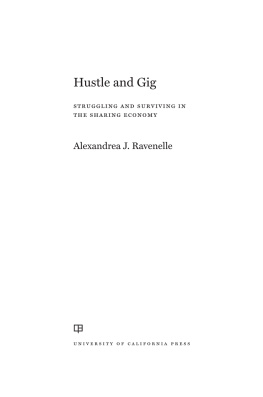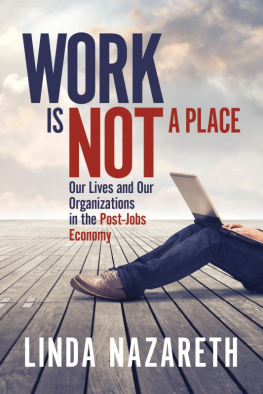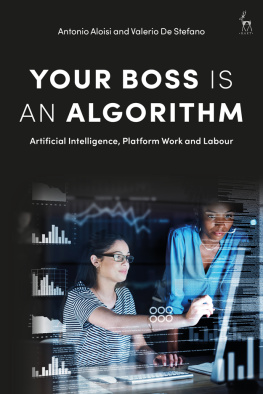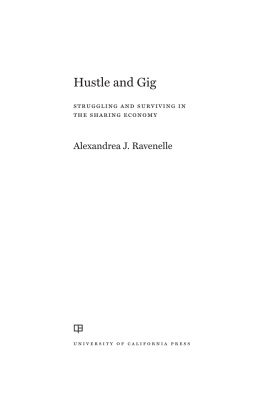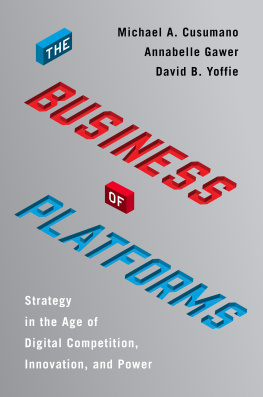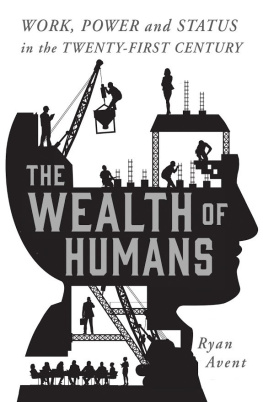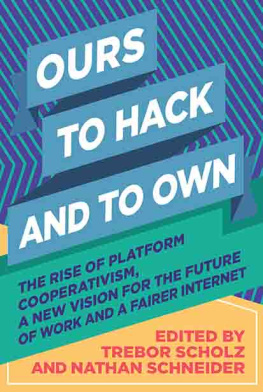
HUM ANS AS A SERVICE
HUMANS AS ASERVICET h e Prom ise a n d Pe r i l s ofWor k i n t h e Gig Econom yJ E R E M I A S PR A SSL
Magdalen CollegeUniversity of Oxford1
1Great Clarendon Street, Oxford, ox2 6dp,United KingdomOxford University Press is a department of the University of Oxford.It furthers the Universitys objective of excellence in research, scholarship,and education by publishing worldwide. Oxford is a registered trade mark ofOxford University Press in the UK and in certain other countriesJeremias Prassl 2018The moral rights of the author have been assertedFirst Edition published in 2018Impression: 1All rights reserved. No part of this publication may be reproduced, stored ina retrieval system, or transmitted, in any form or by any means, without theprior permission in writing of Oxford University Press, or as expressly permittedby law, by licence or under terms agreed with the appropriate reprographicsrights organization. Enquiries concerning reproduction outside the scope of theabove should be sent to the Rights Department, Oxford University Press, at theaddress aboveYou must not circulate this work in any other formand you must impose this same condition on any acquirerPublished in the United States of America by Oxford University Press198 Madison Avenue, New York, NY 10016, United States of AmericaBritish Library Cataloguing in Publication DataData availableLibrary of Congress Control Number: 2017957869ISBN 9780198797012Printed and bound byCPI Group (UK) Ltd, Croydon, cr0 4yyLinks to third party websites are provided by Oxford in good faith andfor information only. Oxford disclaims any responsibility for the materialscontained in any third party website referenced in this work.
To Abi
Contents11. 112. 313. 514. 715. 936. 119141187191
In the spring of 1770, a sensation was presented to the court of MariaTheresa in Vienna: nothing less than the worlds first fully automatedchess robotthe Mechanical Turk. Automata, or mechanical simulations,were a technical obsession of the time. This machine, however, was in adifferent league. Once activated, the Turk would recognize its opponentsstrategy, pick up chess pieces, and make its own movessurprisingly goodones, at that. Over the years, the Mechanical Turk mesmerized internationalaudiences. It played Napoleon Bonaparteand caught him cheating.Despite many attempts to reveal its secrets (even Edgar Allen Poe had a go),however, the technology enabling the Turks magic prowess remained amystery until shortly before its destruction in a nineteenth-century blaze.Given that it would take another century-and-a-half until IBMs DeepBlue took on and defeated world chess champion Garry Kasparov in the1990s, just how had Austrian engineer Wolfgang von Kempelen managed tocreate a chess robot in the eighteenth century? Well, as so often in life, ifsomething sounds too good to be true, it probably is: crouching in a hiddencompartment inside the Turks chessboard was a human player, moving piecesaround the board above. During pre-game presentations, the operator wasquite literally hidden behind modern technology, moving around betweenwhirring wheels, shiny dials, and complicated machinery as each side panelwas opened in turn.1* * *Over two centuries later, Amazon CEO Jeff Bezos took to the stage at theMassachusetts Institute of Technology (MIT) to set out his vision for Amazonsfuture. He hadnt come to talk about selling books, groceries, or even drones;rather, the plan was to rent out Amazons guts and become the worldsleading provider of web services. Software developers requiring processingHumans as a Service: The Promise and Perils of Work in the Gig Economy. First Edition.Jeremias Prassl. Jeremias Prassl 2018. Published 2018 by Oxford University Press.
2Introductionpower and data storage would no longer need to buy expensive hardware tomeet their needs; they could tap into Amazons servers instead and pay afractional price for the services required.Amazons mighty servers, however, werent the only new product on offerthat morning. Jeff Bezos revealed that the companys algorithms were stillstruggling with some fairly basic tasksfrom working out how to categor-ize photographs to determining which products on its website had doublelistings. Amazons solution? To develop an internal platform that outsourcedthese tasks to humans. Users around the world would log on, review theimages, and help Amazons algorithms to do their job.There seemed to be no limit to what could be outsourced in this way,from transcribing podcasts to small programming jobs. The platform wouldcreate a new kind of microwork, whereby a crowd of individuals couldcomplete discrete tasks in minutesand be paid pennies for it. The platformsname? Amazon Mechanical Turk (MTurk).
Welcome to the Gig EconomyOver the course of the past decade, Amazons MTurk has been joined by a largenumber of competitors, both online and in the real world. An ever-growingnumber of start-ups are setting up online platforms and mobile apps to connectconsumers, businesses, and workersoften for jobs lasting no longer than a fewminutes. What started out as a small niche for digital crowdwork has grown intoa global phenomenon. Some of the major players have quickly become house-hold namesthink ride-sharing companies Uber, Lyft, Didi, and Ola, deliveryapps Deliveroo and Foodora, or casual task platforms Helpling and TaskRabbit.New platforms are cropping up in industries from transportation to domes-tic care, from professional services to manual labour. They are at the van-guard of what is often called the gig economy, evoking the artists life inwhich each concert, or gig, is but a one-off task or transaction, withoutfurther commitments on either side.2The rise of these companies has been meteoricand is surrounded byintense public debate. Contradictions abound. To some, the Uber economy ismerely the latest instantiation of runaway capitalism... screwing the workers;3to others, collaborative consumption is key to a fundamental improvementin our working lives.4 Journalists, regulators, and academics have quickly
Humans as a Service 3become interested in the gig economy. Most agree that we are witnessing arevolutionwhilst bitterly contesting its nature. On the one hand, there arethose who enthusiastically promote the gig economy as nothing less than afundamental reinvention of labour markets, weaving a fascinating tapestryof innovation, one that provides an early glimpse of what capitalist societiesmight evolve into over the coming decades5a story of platforms facilitatingthe exchange of goods, services, or social currency, thereby enabling valuecreation for all participants.6Vociferous critics, on the other hand, castigate gig platforms for extend-ing a harsh and deregulated free market into previously protected areas ofour lives,7 thus:forging an economic system in which those with money will be able to usefaceless, anonymous interactions via brokerage websites and mobile apps tohire those without money by forcing an online bidding war to see who willcharge the least for their labor.8
Humans as a ServiceBack in 2006, Jeff Bezos had no such qualms. The CEO of one of theworlds largest tech companies was excited by MTurks business promise. Inaddition to books, groceries, and gadgets, Amazon would henceforth sell
work:Youve heard of software as a serviceWell, this is basically humans as a service.9Humans have always provided services to their employers and customers, ofcourse. As workers, however, they enjoy significant legal and economic pro-tection in return, from minimum wage and unfair dismissal laws, to socialsecurity and pensions. Therein lies the attraction of humans as a service:like information technology (IT) infrastructure, large workforces are expen-sive to build and maintain. Servers need to be powered and cooled; workersneed to be trained and paid wagesirrespective of peaks and troughs inconsumer demand.Once work itself becomes the service or commodity, however, suchresponsibilities can be avoided, lowering prices for consumers and increasing
Next page

